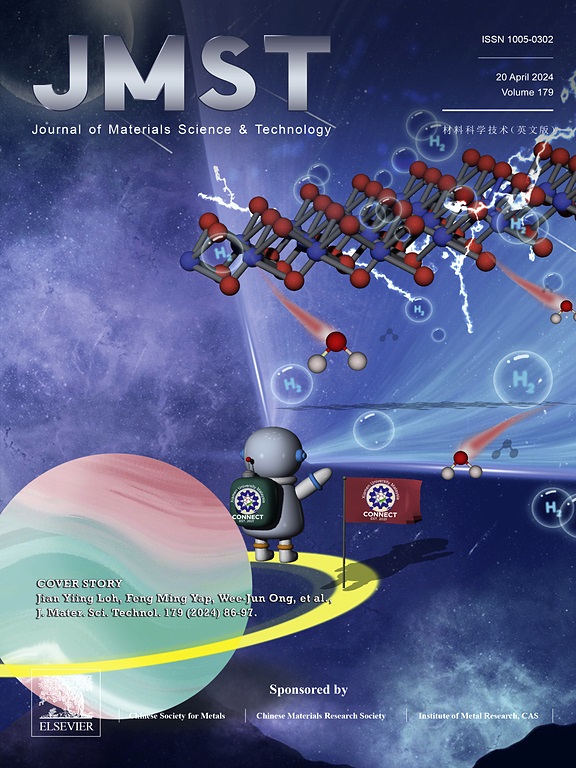Achieving superior high-temperature strength and ductility in near-α titanium alloys by in-situ silicide formation
IF 11.2
1区 材料科学
Q1 MATERIALS SCIENCE, MULTIDISCIPLINARY
引用次数: 0
Abstract
Near-α titanium (Ti) alloys are promising high-temperature (HT) structural materials for aerospace and automotive applications due to their superior specific HT strength and creep resistance. Nevertheless, improving the synergy between strength and ductility at HTs, and thereby expanding the operating temperature range, remains a key challenge in advancing the HT application potential of near-α Ti alloys. Herein, a novel in-situ silicide formation strategy is proposed to achieve superior high-temperature strength and ductility synergy in near-α Ti alloys. Specifically, this strategy is realized through fabricating hypoeutectoid and hypereutectoid TA15 alloys (Ti-6.5Al-2Zr-1Mo-1V, wt.%) containing 0.5 and 1.0 wt.% silicon (Si) via spark plasma sintering (SPS). Results indicate that Si alloying significantly enhances the HT strength of the TA15 alloy without compromising its HT ductility. At 500°C, TA15 alloy with 1.0 wt.% Si achieves a tensile strength of 937.8 MPa with a break elongation of 17.5%, showing superior strength-ductility synergy over most commercial near-α Ti alloys and Ti matrix composites. The superior HT strength-ductility synergy of the Si-containing alloys is attributed both to the silicides in-situ formed during SPS and to additional silicides in-situ formed during HT deformation. Additionally, adding 1.0 wt.% Si into TA15 alloy deteriorated the room-temperature ductility while having no adverse effect on the HT ductility, highlighting the temperature-dependent effects of intergranular silicides on mechanical properties. Furthermore, quantitative analysis of HT strengthening mechanisms is performed, providing insights for designing near-α Ti alloys for HT structural applications.

求助全文
约1分钟内获得全文
求助全文
来源期刊

Journal of Materials Science & Technology
工程技术-材料科学:综合
CiteScore
20.00
自引率
11.00%
发文量
995
审稿时长
13 days
期刊介绍:
Journal of Materials Science & Technology strives to promote global collaboration in the field of materials science and technology. It primarily publishes original research papers, invited review articles, letters, research notes, and summaries of scientific achievements. The journal covers a wide range of materials science and technology topics, including metallic materials, inorganic nonmetallic materials, and composite materials.
 求助内容:
求助内容: 应助结果提醒方式:
应助结果提醒方式:


